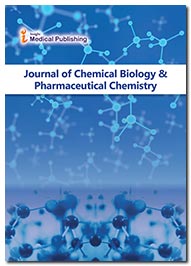ISSN : 2634-7814
Journal of Chemical Biology & Pharmaceutical Chemistry
Carbohydrates: A Paradigm for HIV Vaccine Development
Sumit O Bajaj* and Supriya Dey
Department of Chemistry, The Scripps Research Institute, La Jolla, CA 92037, USA
- *Corresponding Author:
- Sumit O Bajaj
Department of Chemistry, The Scripps Research Institute
La Jolla, CA 92037, USA
E-mail: sobajaj@scripps.edu/sumitbajaj16@gmail.com
Received date: October 14, 2017; Accepted date: October 31, 2017; Published date: November 07, 2017
Citation: Bajaj OS, Dey S (2017) Carbohydrates: A paradigm for HIV Vaccine Development. J Chem Biol Pharm Chem 1:02.
Copyright: © 2017 Bajaj OS, et al. This is an open-access article distributed under the terms of the Creative Commons Attribution License, which permits unrestricted use, distribution, and reproduction in any medium, provided the original author and source are credited.
Abstract
Vaccines are the most effective defensive measure toward the various infectious diseases, work by boosting the immune system with the production of proteins called antibodies to recognize and fight hard against deadly pathogens. Human Immunodeficiency Virus (HIV-1) is one of the deadly infection and threat to the society with ~37 million people currently being infected worldwide. Thus, there is high demand to develop a suitable HIV vaccine for this pandemic disease. Although more insight and progress has been made towards the vaccine development but so far the efforts are futile. Since the advent of antiretroviral therapy (ART), the life expectancy of HIV infected patients can be extended and improved but vaccine will be the ultimate solution to this serious issue.
Keywords
HIV vaccine; Carbohydrates; Glycoproteins; Nglycans; High-mannose; Immunity
Editorial
Vaccines are the most effective defensive measure toward the various infectious diseases, work by boosting the immune system with the production of proteins called antibodies to recognize and fight hard against deadly pathogens. Human Immunodeficiency Virus (HIV-1) is one of the deadly infection and threat to the society with ~37 million people currently being infected worldwide. Thus, there is high demand to develop a suitable HIV vaccine for this pandemic disease [1]. Although more insight and progress has been made towards the vaccine development but so far the efforts are futile. Since the advent of antiretroviral therapy (ART) [2], the life expectancy of HIV infected patients can be extended and improved but vaccine will be the ultimate solution to this serious issue.
Major challenges involved in the development of HIV vaccine: HIV virus changes its appearance and genetic information frequently, which makes vaccine for one HIV strain to be ineffective against other strains [3]. The HIV viral envelope is covered with immune evading carbohydrates (glycan shield) enriched in mannose residues and rapidly mutable proteins and uses envelope spikes to bind thus infect other healthy cells. Cell surface embedded carbohydrates play significant roles in the body’s immune system, specifically to defend against viruses and bacteria.
Major hurdle in glyco-science research: Researchers have found that the most promising targets for immunogen design are the carbohydrates or glycans present on the glycoprotein gp120 [4]. Two envelope glycoproteins (gp120 and gp41) are found on the surface of HIV-1 virions. The epitope of gp120 has ~24 N-glycosylation sites and are densely glycosylated mostly with high mannose type N-Glycans (Man9GlcNAc2). The variability in potential N-glycosylation sites increases virus fitness by masking the possible antibody binding sites. The neutralizing power of broadly neutralizing antibody (bNAbs) PG-9 and PG-16 towards the N-glycan suggests that these sugar epitopes may be used towards the HIV vaccine development [5]. Although, progress has been made related to the structural elucidation of protein but the structures and functions of glycans that forms an immune shield on the virus still remains a challenge though necessary for the development of effective vaccines. Thus obtaining the homogenous, highly pure carbohydrates antigens and glycoproteins for the biological studies is highly sought [6].
A new class of broadly neutralizing antibodies (bNAbs) were found to neutralize wide range of HIV-1 strains by recognizing these N-Glycan epitopes. Thus synthetically prepared N-glycans can mimic the exact carbohydrate epitope on the virus cell surface for the development of HIV-vaccine.
A successful vaccine must be able to elicit broad and potent NAbs (bNAbs) capable of neutralizing diverse strains of primary HIV-1. Future insight in field of glycoscience is highly desirable towards the successful development of HIV vaccine.
References
- Wang LX (2013) Synthetic carbohydrate antigens for HIV vaccine design. Curr Opin Chem Biol 17(6): 997-1005.
- Shivatare SS, Chang SH, Tsai TI, Tseng SY, Shivatare VS, et al. (2016) Modular synthesis of N-glycans and arrays for the hetero-ligand binding analysis of HIV antibodies. Nature Chemistry 8: 338-46.
- Scanlan CN, Offer J, Zitzmann N, Dwek RA, (2007) Exploiting the defensive sugars of HIV-1 for drug and vaccine design. Nature 446: 1038-1045.
- Helenius A, Aebi M, (2001) Intracellular Functions of N-Linked Glycans. Science 291: 2364-9.
- Wang Z, Chinoy ZS, Ambre SG, Peng W, McBride R, et al. (2013) A General Strategy for the Chemoenzymatic Synthesis of Asymmetrically Branched N-Glycans. Science 341: 379-83.
- Andrabi R, Su CY, Liang CH, Shivatare SS, Briney B, et al. (2017) Glycans Function as Anchors for Antibodies and Help Drive HIV Broadly Neutralizing Antibody Development. Immunity 47: 524-537.
Open Access Journals
- Aquaculture & Veterinary Science
- Chemistry & Chemical Sciences
- Clinical Sciences
- Engineering
- General Science
- Genetics & Molecular Biology
- Health Care & Nursing
- Immunology & Microbiology
- Materials Science
- Mathematics & Physics
- Medical Sciences
- Neurology & Psychiatry
- Oncology & Cancer Science
- Pharmaceutical Sciences
